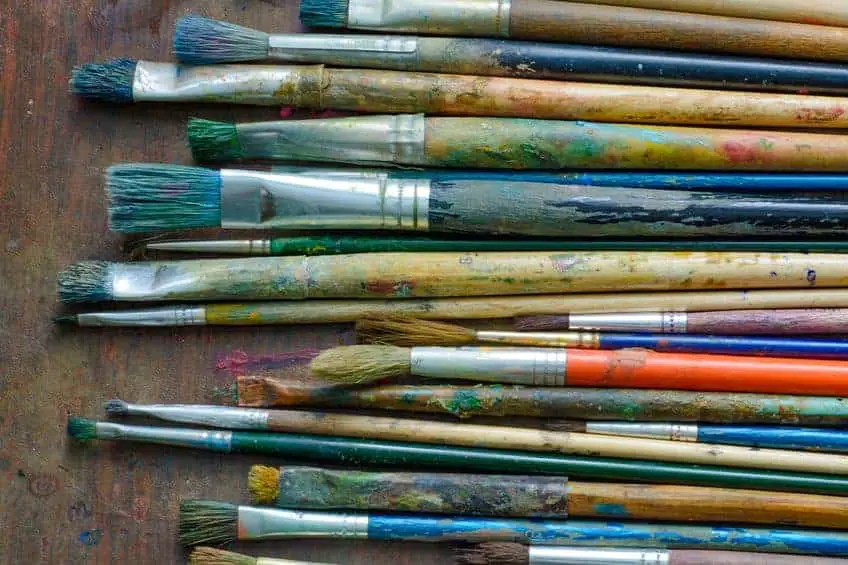When you start to oil paint, it can seem quite daunting to learn about the different aspects of oil painting and what it entails. This can be especially true about oil painting brushes.
There are seven basic oil paintbrush shapes. Each of these shapes has different uses and will come in various sizes. The basic shapes for oil paint brushes include round, flat, bright, filbert, fan, angle, MOP, and rigger.
Table of Contents
- Know the Size of Your Paintbrushes
- Where to Buy Some Oil Paintbrush Sets
- Frequently Asked Questions
- Related Questions
Each one of these brushes has different uses. Some artists will use all these brush shapes in their paintings, and others may use certain shapes. Short-handled brushes are usually for watercolor or ink painting, but just because the brush has a short handle, there is also no reason why you cannot use it for oil or acrylic painting. I have used short-handled brushes for oil painting without any problem.
Know the Size of Your Paintbrushes
Most paintbrushes have a number that will say what the size of the paintbrush is. However different manufacturers may have different numbers for different actual sizes of brushes. There is no universal standard that says this number must be exactly this size. This numbering system can make it confusing for people who are just starting to paint.

The key to remember with the paintbrush sizes is that the smaller the number, the smaller the paintbrush bristles will be. Some of the smaller brushes may also be named 000 or 20/0, 10/0, etc. The most common paintbrush sizes used are from 000 to 20.
Each of the brush shapes can come in a variety of sizes. For example, I use the flat or filbert brushes a lot, and I can use anything from size 1 to 20 in that shape brush.
The Round Shape Oil Painting Brush

The round-shaped oil painting brush is usually small, and it has a pointed tip. This brush is used to add some fine detail to your painting. If you want to do excellent detail, get yourself one with a nice hard-pointed tip that will allow you to get the detail you desire.
The Flat Shape Oil Painting Brush

The flat-shaped oil painting brush is easy to remember as the brush’s tip has a straight blunt cut. You will notice that this brush is longer than the Filbert brush shape. The reason is it the extra length of the brush hair allows you to be able to quickly and evenly spread paint over the canvas.
I use this brush a lot when I have an area that needs a lot of paint, and I want to have it spread evenly or quickly. For this reason, I really like the flat brushes and use them in a lot of different sizes.
The Bright Shape Oil Painting Brush
The bright-shape oil painting brush may look quite similar and can often get confused with the flat-shaped oil painting brush. But the shape oil painting brush has shorter brush bristles than the flat shape brushes, and the edges can be slightly cut in.
This brush is great for when you want to paint using thick paint, as it can help drive the paint into the canvas if you like to apply your paint thickly, as I do, this a great brush to also have in some larger sizes.
The Filbert Shape Oil Painting Brush
The filbert-shaped oil painting brush usually has longer bristles than the bright shape brush but is a bit shorter than the flat shape paintbrushes. They are cut in or what can be called domed at the end of the brush. This dome cut allows you to paint more detail with this kind of brush than, say, the flat brush.
The beauty of this brush is that besides giving you some detailed work, it can also help give you some good paint coverage. The filbert is a basic paintbrush, and every painter should have different sizes of filbert brushes in their paintbrush selections.
The Fan Shape Oil Painting Brush
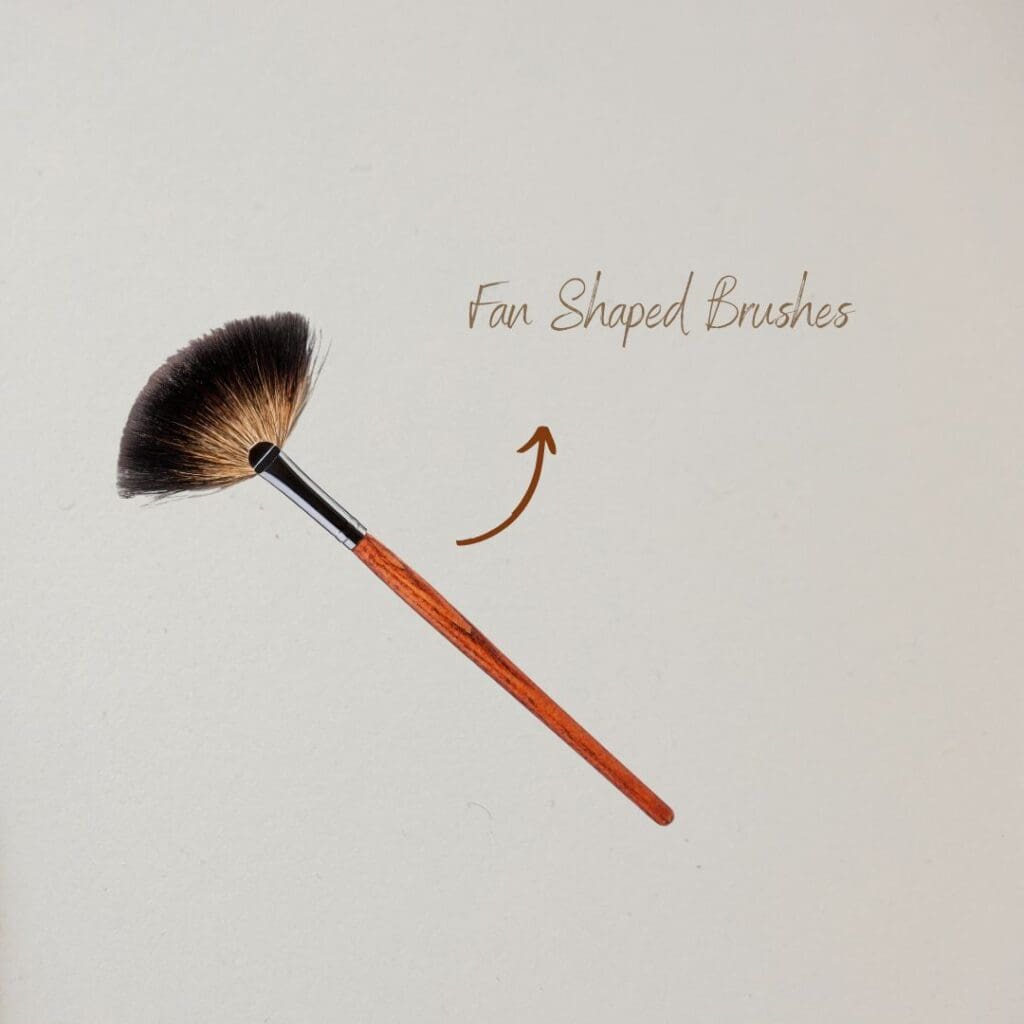
The fan-shaped oil painting brush is quite an easy brush shape to remember as it looks just like its name applies – a fan. This brush is used to help blend different colors.
I really love this brush as you can put some paint on a canvas and use this brush to blend them. The effect can be quite enjoyable. This is a great brush to get so that you can experiment with it.
The Angle Shape Oil Painting Brush
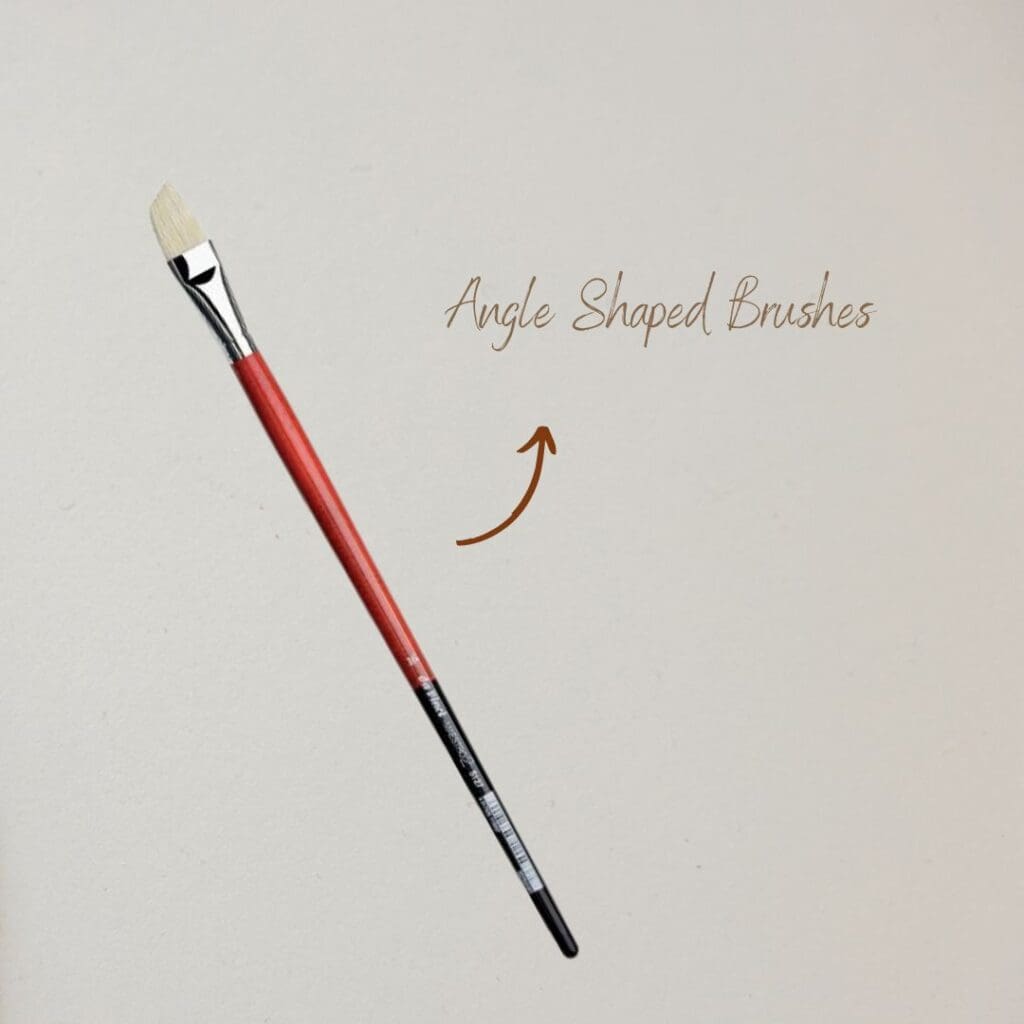
This brush’s shape is also as the name applies; it is a brush where there is an angle that is cut so that one side of the brush is higher than the other side.
This brush is like the Filbert in that it is a good brush for an artist to have in their paintbrush assortment; as, like the Filbert brush, this brush is also versatile as it can be used for the general applying of paint on the canvas or can also be used for your painting detail work.
The MOP Shape Oil Painting Brush
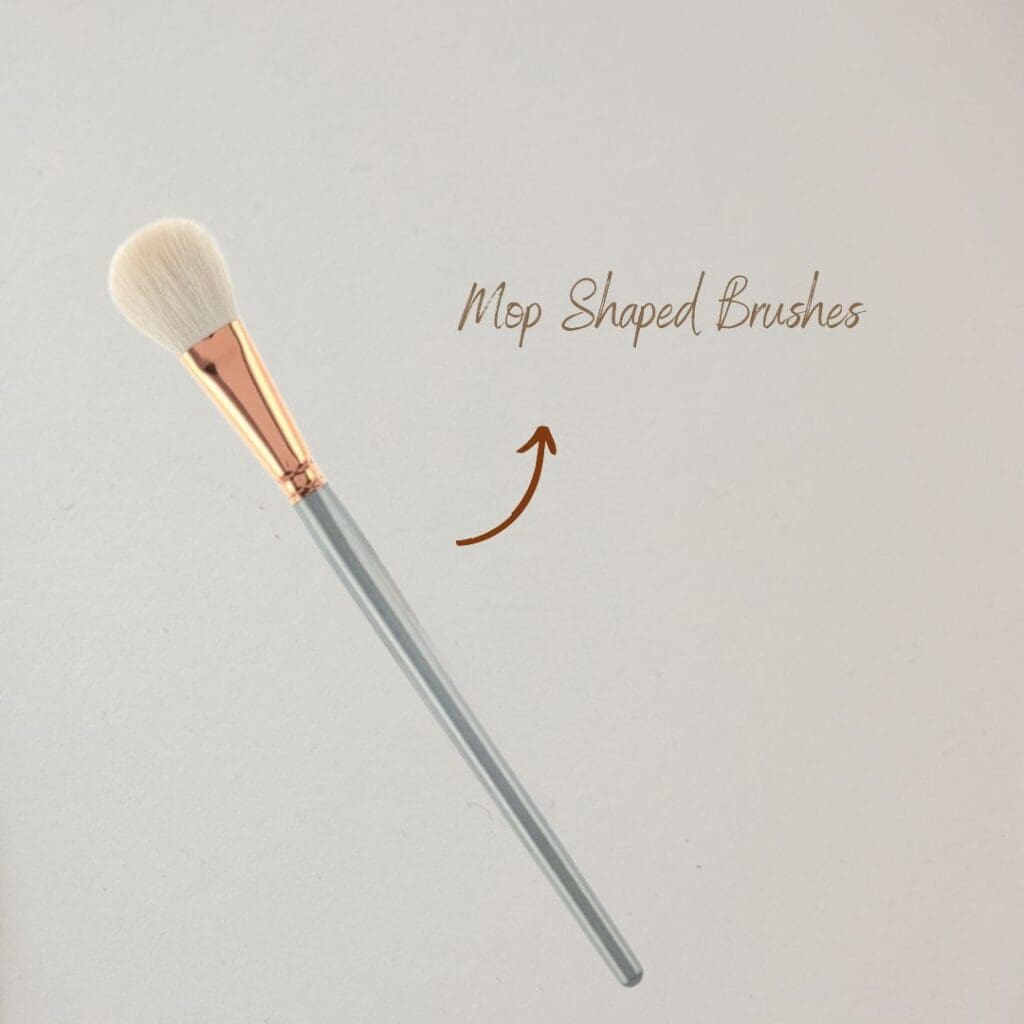
The MOP-shaped brush is a larger brush with some slightly rounded edges on the brush. This brush is usually softer, and so it is a softer kind of paint application. This brush can also be used to apply a top glaze over your painting without damaging any of the lower layers of your painting due to its soft nature.
So if you want to be able to apply some glaze on your painting, this would be the brush you would need to use.
The Rigger Shape Oil Painting Brush
The rigger-shaped oil painting brush is named after artists who used this brush to paint the rigging in ships’ paintings. This brush is longer and thinner than the round shape brush and is also a brush used to paint detail on your paintings.
Where to Buy Some Oil Paintbrush Sets
Like many things, oil paint brushes come in all price ranges. Here are some oil paintbrush sets you can consider to buy and why.
- Artify has a 38-piece paintbrush art set – this is a reasonably priced art set with 38 different shapes and sizes of brushes. It also comes with a very nice carrying case. This is an excellent starter brush kit for those just starting to paint.
- Filbert set of sable brushes – If you are looking for a wide range of filbert brushes in various sizes, this is a really great set of filbert-shaped sable brushes.
- Art Paint Brush – This company specializes in paintbrushes, so they have various shapes, sizes, and qualities.
When learning to paint, it is good to know the different shapes of the paintbrushes and what each paintbrush is used for. It will help begin painters better under the paintbrushes they buy and use for their oil painting.
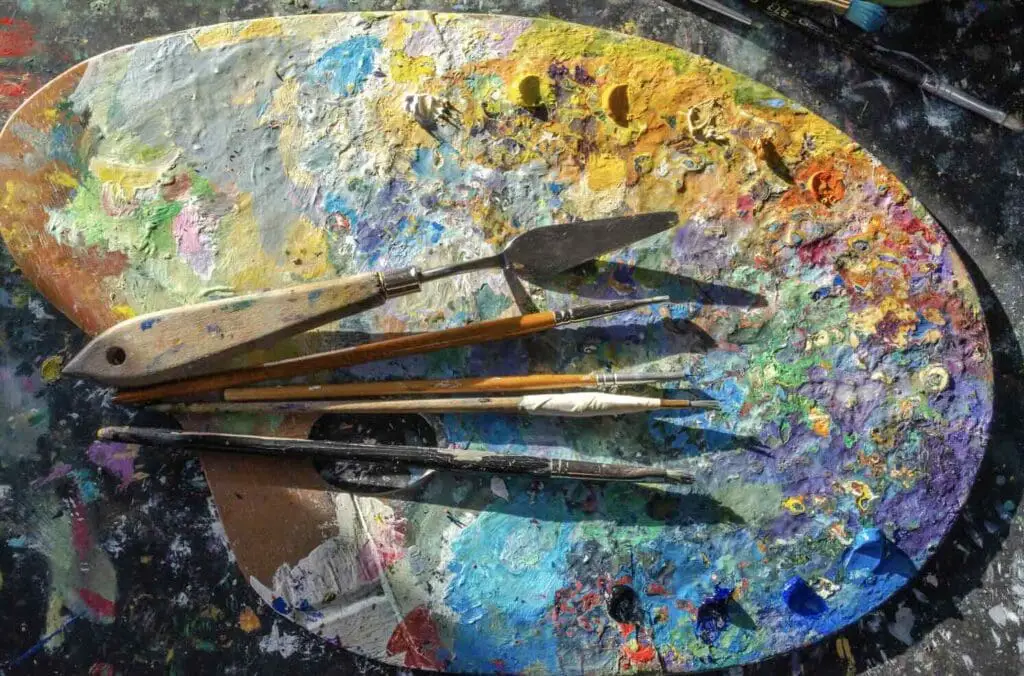
But despite what each brush is supposed to be used for, do not allow this to limit your painting or creativity. A large part of being creative is also learning to break some of the artistic rules every once.
Anita Louise Art is dedicated to art education, great artists, and inspiring others to find and create their art. We love art that uplifts and inspires. #ArtToMakeYouSmile! #ArtToMakeYouHappy!
If you want to see any of my art, you can find out more by clicking here. If you are interested in what inspires me and my paintings, you can discover more by clicking here.
We have a free newsletter and would love you to be part of our community; you can subscribe to the newsletter by clicking here. I would be happy to talk to you if you have any questions. You can reach me, Anita, by clicking here.
Subscribe to our Anita Louise Art YouTube Channel filled with great videos and information by clicking here.
Join us for our podcast “5 Minutes With Art.” Spend 5 minutes a week with us to discover and learn about great art and artists. You can find out more about our podcast by clicking here.
Frequently Asked Questions
What is the best type of brush to use for oil-based paints?
The best brush for oil-based paint is called a China bristle or hog hair. But today, some excellent synthetic brushes can also be used for oil painting, especially as you are just starting to learn to oil paint.
I use some synthetic paint brushes and have found they work fine and clean up nicely. After I have cleaned them with a brush cleaner, I may use some dish or mild soap to clean them one last time.
What are the parts of the paintbrushes called?
When you are painting, it is also helpful to know the different parts of a paintbrush. The basic parts of a paintbrush are:
Handle – Every brush will have a handle. Some will be wood, and others can be plastic.
Ferrule – This metal part holds the bristles to the brush handle.
Bristles – This is the part you actually use to paint with.
Toe– This refers to the very top of the brush.
Belly – This refers to the middle part of the bristles.
What are the best types of brushes for oil painting?
The best brushes for oil painting are usually made from natural fibers like hog bristle for thicker paint application and sable for finer details. Synthetic brushes can also be a good alternative. The choice often depends on the painter’s technique and the desired effect.
How do I clean and maintain my oil paint brushes?
Clean oil paint brushes with a solvent like turpentine or mineral spirits, then wash them with mild soap and warm water. Shape the bristles and allow them to dry horizontally. Proper cleaning after each use prolongs their lifespan.
What different shapes of oil paintbrushes should I use?
Common shapes include flat (for broad strokes), round (for detail and thin lines), filbert (a rounded shape good for blending), and fan (for blending and textural effects). Each shape serves different purposes in oil painting.
How often should I replace my oil paintbrushes?
The frequency of replacement depends on the quality of the brush and how well it’s maintained. High-quality brushes can last for years if cared for properly. Replace brushes when they lose shape or the bristles become too frayed.
Can I use the same brushes for acrylic and oil painting?
While you can technically use the same brushes for both acrylic and oil painting, it’s not recommended. Oil painting requires stiffer bristles, and oil residue can affect the performance of the brush when used with acrylics. It’s best to have separate sets for each medium.
Related Questions
Pros and Cons of Selling Your Artwork on Fine Art America
Leonardo da Vinci is a man known to have had many different titles and professions during his lifetime. He was able to master this profession because he was a genius. But more than just being a genius, Leonardo is also self-educating and never stops learning. He had an insatiable amount of curiosity about all kinds of subjects.
By clicking here, you can learn more by reading the Pros and Cons of Selling Your Artwork on Fine Art America.
Pros and Cons Of Selling Your Artwork To An Art Gallery
When selling your art to an art gallery, you need to consider many pros and cons. One of the major pros is that the gallery usually helps you to market your artwork. A major con is that you usually lose control over who buys your artwork. An artist needs to weigh out if selling through an art gallery is what they want to consider to sell their artwork.
By clicking here, you can learn more by reading the Pros and Cons Of Selling Your Artwork To An Art Gallery.

